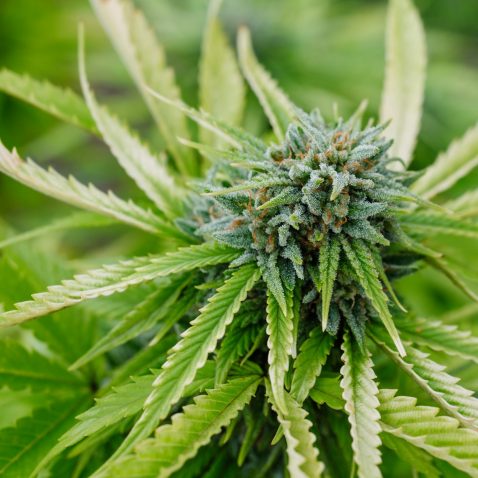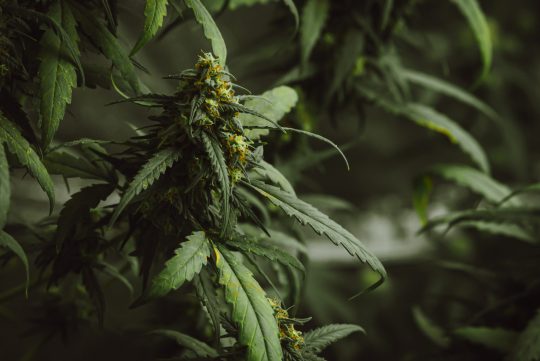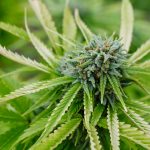Male vs Female Weed Plants
Male cannabis plants are generally less desirable for cannabis cultivators, as their primary function is to fertilize female plants. Male pre-flowers will develop small, round pollen sacs at the nodes, which will eventually burst open and release pollen into the air.
This pollen can be carried by the wind or by humans to nearby female plants, which will then produce seeds. In addition to producing seeds, male cannabis plants also contain lower concentrations of THC and CBD, making them less valuable for medicinal or recreational use.

Male Cannabis Plants
Male cannabis plants are generally less desirable for cannabis cultivators, as their primary function is to fertilize female plants. Male pre-flowers will develop small, round pollen sacs at the nodes, which will eventually burst open and release pollen into the air.
This pollen can be carried by the wind or by humans to nearby female plants, which will then produce seeds. In addition to producing seeds, male cannabis plants also contain lower concentrations of THC and CBD, making them less valuable for medicinal or recreational use.
Male cannabis plants are typically taller and have wider internodal spacing than female plants. They tend to grow in a more spindly, branching pattern, with fewer leaves and smaller flowers.
One of the key indicators of a male plant is the presence of pollen sacs at the nodes, which develop into clusters resembling bunches of bananas. It is important to remove male plants from the grow room as soon as possible, as they can start producing pollen as early as four weeks into the vegetative stage.
Female Cannabis Plants
Female cannabis plants are the most desirable for cannabis cultivators, as they are responsible for producing the large, resinous buds that are rich in THC and other cannabinoids.
The pre-flowers on female cannabis plants will develop into large, bushy flowers with a distinctive shape and structure. The calyx, which is the center part of the flower, will be large and surrounded by white hairs, known as pistils.
These pistils serve as the female reproductive organs, which catch and store pollen from male plants in order to fertilize the flower and produce seeds.
Female cannabis plants tend to grow shorter and bushier than males, with tighter internodal spacing and more leaves and flowers. They are more resilient and adaptable than males, and are able to produce buds with or without fertilization.
When female plants are not fertilized, they will focus all of their energy on producing large, resinous buds in an attempt to attract male pollen.
Hermaphrodite Cannabis Plants
Hermaphrodite cannabis plants, also known as “hermies,” are a result of stress during the flowering stage, such as light leaks or sudden power outages. When female plants are exposed to stress, they may develop male reproductive organs in an attempt to self-fertilize and produce seeds. However, the male flowers produced by hermaphrodite plants are typically unstable and of lower quality than those produced by males.
The biggest problem with hermaphrodite cannabis plants is that they produce pollen, which can fertilize nearby female plants and result in seeds. These seeds are typically tainted by the hermaphrodite genetics, which makes them less stable and less desirable for breeding. In addition, seeded cannabis flowers fetch lower prices on the market, so cannabis cultivators usually go to great lengths to avoid any form of pollination.
Growing Sinsemilla Marijuana Flowers
Sinsemilla is a Spanish term meaning “without seeds,” and refers to cannabis flowers that have not been fertilized and do not contain any seeds. Growing sinsemilla marijuana flowers requires strict attention to detail and a carefully controlled environment. The first step is to cull all males from the grow room, leaving only female plants.
Once the grow room contains only females, the cultivation process can begin. Cannabis cultivators must switch over to a 12/12 lighting schedule in order to initiate flowering. Females will begin to produce large, resinous buds in an attempt to attract male pollen, but without any males present, they will continue to grow larger and more potent.
By avoiding pollination, cannabis cultivators are able to produce larger yields of sinsemilla flowers that are seedless and rich in THC and other cannabinoids. Seeded cannabis flowers fetch lower prices on the market, so it is important to avoid pollination at all costs.
Summary
Growing cannabis plants requires a deep understanding of the plant’s biology and growth patterns. By understanding the differences between female and male plants, and the implications of hermaphroditism, growers can achieve maximum yields and produce high-quality, potent buds.
Whether you are looking to grow sinsemilla buds or breed new strains of cannabis, understanding the biology of the plant is essential to your success. So whether you love or hate male plants, or fear the dreaded “hermies,” by mastering the basic principles of cannabis cultivation, you can grow healthy, strong plants and produce exceptional buds.
Share the Love
If you found this post useful, please let others know about it by sharing it.

